

HAYDN: FROM ESTERHÁZA TO HANOVER SQUARE

WELCOME TO OUR 2025/26 SEASON AT THE SOUTHBANK CENTRE.
Celebrating 40 fantastic years of making music.
1986. It was the year of the Westland Affair, the Chernobyl nuclear disaster, the infamous ‘Hand of God’ goal at the World Cup in Mexico, the premiere of Harrison Birtwistle’s opera The Mask of Orpheus… and in late June Wham! were at number 1 in the UK charts with The Edge of Heaven.
On 26 June, the Orchestra of the Age of Enlightenment first stepped on to a stage.
The first of our two seasons marking this milestone features a kaleidoscope of old favourites and new combinations. It features some of our best loved partnerships and celebrates our shared history. Handel and Bach, Haydn and Mozart, Beethoven, Berlioz, Brahms and Dvořák are all composers who have been at the heart of our journey.
The challenges faced by the OAE and all our colleagues are varied, but we remain absolutely focused on the mission of sharing the highest quality music with the widest audience possible. What continues to shine after 40 years is the golden thread of a story of friends united by a profound love of the art of music.

© Orchestra of the Age of Enlightenment
Programme
7.00pm, Thursday 27 November
Southbank Centre’s Queen Elizabeth Hall
JOSEPH HAYDN (1732 – 1809)
Symphony No. 39
I. Allegro assai
II. Andante
III. Menuet – Trio
IV. Finale: Allegro di molto
Sinfonia Concertante
I. Allegro
II. Andante
III. Allegro con spirito
– Interval (20 minutes) –
Keyboard Concerto No. 11
I. Vivace
II. Un poco Adagio
III. Rondo all’Ungherese: Allegro assai
Symphony No. 102
I. Largo – Vivace
II. Adagio
III. Menuet. Allegro – Trio
IV. Finale: Presto
ORCHESTRA OF THE AGE OF ENLIGHTENMENT
Kati Debretzeni violin / leader
Daniel Bates oboe
Jane Gower bassoon
Luise Buchberger cello
Sir András Schiff fortepiano / director
The OAE’s 40th anniversary seasons in 2025 / 26 and 2026 / 27 are made possible with the support of The Forty Circle.
The Orchestra would like to recognise, with this concert, the contribution David Marks has made as a trustee of the OAE over the past nine years.
Free pre-concert talk with Margaret Faultless and Dr Rachel Stroud in the Queen Elizabeth Hall Foyer.
Orchestra of the Age of Enlightenment
Violins I
Kati Debretzeni*
Rodolfo Richter
Iona Davies
Andrew Roberts
Daniel Edgar
Debbie Diamond
Violins II
Margaret Faultless*
Claire Holden
Alice Evans
Henry Tong
Claudia Delago-Norz
Kinga Ujszászi
Violas
Anne Sophie van Riel
Martin Kelly
Annette Isserlis
Kate Heller
Cellos
Luise Buchberger*
Andrew Skidmore
Catherine Rimer
Double basses
Christine Sticher*
Cecelia Bruggemeyer
Flutes
Lisa Beznosiuk*
Neil McLaren
Oboes
Daniel Bates*
Leo Duarte
Bassoons
Jane Gower*
Sally Jackson
Horns
Richard Bayliss
Martin Lawrence
Nicholas Benz
David Bentley
Trumpets
David Blackadder*
Phillip Bainbridge
Timpani
Adrian Bending*
*OAE Principal Players

BECOME A FRIEND
Love our Southbank Centre concerts?
Join us as a Friend of the OAE today and help bring exceptional music to life. As a Friend, you’ll experience concerts like never before, gaining both front-row access and behind-the-scenes insights. Enjoy priority booking for our entire season, attend open rehearsals, and connect with our musicians at exclusive membership events. For just £50 a year, you can enjoy these benefits and be a part of our 40th anniversary celebrations, supporting an ambitious and inspiring 2025 / 26 Season.
To become a Friend, scan the QR code, visit oae.co.uk/support-us or contact us at development@oae.co.uk or 020 8159 9317
Sir András Schiff on Haydn

by Jessica Duchen
It’s one of today’s great puzzlements – at least, to me – that Joseph Haydn’s music is not being played every day throughout the globe. The life-affirming magic in the works of Beethoven’s mentor-in-chief seems more desirable than ever in a world drifting further and further away from the composer’s Enlightenment ideals.
Perhaps he has been outshone by his rebellious student, or even more by his young friend Wolfgang Amadeus Mozart. After all, no town has used Haydn
as its principal branding for everything from music festivals to chocolate, nor has any playwright theorised that he might have been murdered.
But a handful of exceptional musicians have kept championing Haydn as the years go by, and Sir András Schiff is prime among them.
‘Haydn is certainly not neglected, at least not in Britain,’ Schiff reflects, ‘but compared to Mozart and Beethoven he is not sufficiently appreciated by the public. Haydn’s biography, although he had a
long and colourful life, doesn’t read like those other, more picturesque ones. You could never make a Hollywood movie like Amadeus about him.
‘His music is so obviously great, it speaks for itself. Haydn has left us an incredible oeuvre with a huge amount of music. Whether sacred or secular, in all genres he created countless masterpieces. And he was a true original, actually much more so than Mozart.’
In this concert, Schiff conducts the OAE in two symphonies, Nos. 39 and 102 plus the rare Sinfonia Concertante, and plays the best-known of the composer’s keyboard concertos, No. 11. ‘Of the two symphonies, No. 39 is a typical ‘Sturm und Drang’ composition in the dramatic key of G minor,’ he says, referencing the intense, deep-feeling 18th-century style nicknamed ‘storm and stress’ of which Haydn was a leading exponent. ‘Its beginning reminds me of Mozart’s G minor String Quintet. I wonder if Mozart knew it.’
In his late fifties, considering himself retired, Haydn was invited to London by Johann Peter Salomon. After his long employment as a court Kapellmeister in livery, he was astonished to find himself treated instead as a celebrity. One result was his last collection of symphonies, including No. 102. ‘Of the “London” set, No.102 is one of my favourites and is seldom performed,’ Schiff says. ‘Its second movement was originally in F sharp major as the slow movement of a piano trio in F sharp minor, which I have played a lot. Here it is transposed a semitone down into F major.’
London in 1792 was also the scene of the world premiere of the Sinfonia Concertante, with its unusual solo group of oboe, bassoon, violin and cello. The press heaped it with praise, the London Morning Herald declaring: ‘A new concertante from Haydn combined with all the excellencies of music; it was profound, airy, affecting and original, and the performance was in unison with the merit of the
composition. Salomon [who was the violin soloist] particularly exerted himself on this occasion, in doing justice to the music of his friend Haydn.’
The violin was Haydn’s own chief instrument; when he played string quartets with Mozart, he would have led the group, with the younger composer on the viola. Still, he wrote just as prolifically for the keyboard. ‘Haydn wasn’t a virtuoso pianist – he was more a string player,’ Schiff says, ‘but I would have loved to have heard him play. I am sure it was very beautiful and highly interesting.’
For tonight’s concerto, Schiff plays a copy of an Anton Walther fortepiano, made by Christoph Kern. Why this instrument? ‘Because it matches the strings of the orchestra,’ he says. ‘Walther was one of the preeminent piano makers of the time in Vienna, so it is an ideal choice. An original Walther would be even better, but touring around with it is virtually impossible.’
Few of Haydn’s keyboard concerti are standard concert fare, but this work is the exception. ‘It is by far the best and the only one that’s regularly performed,’ Schiff says. ‘It’s a sunny composition with some melancholy elements. The Hungarian finale is quite irresistible.’
Schiff’s own Hungarian origins may arguably lend him an extra affinity with this element of the music – but there is more to it than that. ‘I always adored Haydn, but not many people played it at the Liszt Academy in Budapest,’ he remembers. ‘There was much more Liszt!’ His aversion to that composer is well known: ‘ I was the only one who tried to avoid the latter.’
The music Haydn considered ‘Hungarian’, however, came chiefly from the local ‘Gypsy’ musicians he would have heard during his time as Kapellmeister to the Esterházy princes. ‘Haydn spent many years on the Esterházy estate in Eisenstadt and on the Hungarian side in Fertőd. He must have heard a lot of
“Gypsy” music in weddings and other celebrations, or simply at the local inns,’ Schiff says. ‘This music is not particularly “Hungarian” – in the sense of the folk songs that Bartók and Kodály later collected – but Haydn associated it with Hungary, so he wrote these movements “alla Ongherese” or “Ungherese”, like the finale of this concerto, or that of the G major Piano Trio.’
Of the various influences that helped to shape Schiff’s approach to Haydn, one crucial figure is also Hungarian: the great violinist and conductor Sándor Végh, with whom Schiff also recorded a cycle of the Mozart piano concertos. ‘He was a marvellous musician and he understood Haydn like few others had,’ he relates. ‘Mainly it was because of his string quartet background, but also because of his own nature that was so similar to Haydn’s.
‘If Mozart came from heaven, then Haydn is very much one of us, standing firmly on the ground with both feet. Haydn is a philosopher, an orator: his music speaks. It’s full of rhetorical elements.’
How would Schiff describe the chief challenges of performing Haydn? ‘His instrumental music is not particularly “difficult”, as far as technical difficulties are concerned – although there are exceptions, like the first violin parts of certain string quartets. He was a practical man, in the best sense of the word. He wanted his music to be playable and enjoyable. “The whole world understands my music,” he said. Well, wishful thinking… The difficulties are elsewhere. You have to be naturally musical, imaginative and courageous.’
There is no such thing, he reflects, as a Haydn performing tradition, unlike the worlds of Mozart and Beethoven. ‘Many of the works are virtually unknown, even today. This is certainly a challenge for the performer, but it is also a liberation. You can just open a score and start from scratch, without the burden of tradition. Yes, there are recordings of the
symphonies, the piano sonatas, the string quartets –even some good ones – but not that many.
‘You have to know this style and how to read the scores. In the symphonies there are often passages of endless semiquavers without any articulation marks. Here the performer has to provide varied articulation and phrasing. It comes naturally if you know the language, but for those who don’t, it can be very difficult.’
Haydn’s music overflows with human and humane qualities: Schiff points to ‘simplicity, wisdom, a wonderful sense of proportion, drama and tenderness, as well as his extreme economy: his works are exactly as long as necessary. And what compositional mastery! He has polyphony and counterpoint in his fingertips, and his fugues in the Masses are masterful.’
Perhaps most challenging of all is the quality for which Haydn is most famous: humour. ‘He is an unsurpassed master in this field – his pupil Beethoven comes close. It’s a very sophisticated kind of humour, based on expectations and surprises. Not like the one in the “Surprise” Symphony, which is rather like a rude joke.
‘Even the best joke needs to be told well, otherwise nobody laughs and that is embarrassing! Generally it’s much easier to make people cry than to bring them to laughter. Humour is a deeply serious matter. Even in The Creation there are very funny moments and this is really not a comic work.’
To celebrate this music together with Schiff and the musicians of the OAE might just make us fall in love with Haydn all over again. ‘Haydn’s spirit, his joie de vivre, his deep humanity make him one of the greatest composers of history,’ Schiff says, ‘every bit as good as Mozart and Beethoven. If I could have wished for a composition teacher, it should have been Haydn.
‘The young Beethoven disagreed,’ he adds wryly, ‘but he later admitted his error.’
The Fortepiano
Christoph Kern

The piano played by Sir András Schiff is a copy of an Anton Walter fortepiano built by Christoph Kern 2007 in Staufen, Germany. The original was built in Vienna in 1795.
At the end of the 18th century, Anton Walter was one of the best and most famous piano makers in Vienna. Joseph Haydn certainly was familiar with Walter’s work. Wolfgang Amadeus Mozart owned a Walter grand piano and had it transported all over Vienna for his academy concerts. Today, the instrument is on display in Mozart’s home in Salzburg. For this reason and because of the high standard of his work, his instruments are often copied today. They are representative of
an entire era. Beethoven also wanted a grand piano from Walter. However, Walter was not prepared to accommodate his special requests and also demanded the normal purchase price. Unlike his competitors, who always provided Beethoven with the latest models free of charge, Walter could obviously afford to take this stance.
The fortepianos of this era usually have a range of five or five-and-a-half octaves and two knee levers instead of pedals. One lifts the dampers, the other operates a mechanism that pushes a thin cloth between the hammer and the strings, modulating the sound more softly, just as if the strings were struck with softer hammers.
The Transit of Haydn
Dr Rachel Stroud
On 15 June 1792, Joseph Haydn gazed through the lens of one of the technological marvels of the age: an extraordinary 40-foot telescope, designed and built by the astronomer William Herschel. Commissioned in 1785 by King George III himself, the instrument cost an astronomical £4,000 to build, and was the largest telescope in existence for over fifty years. Haydn recorded his observation of the experience in the diary notebooks that he kept during his time in London:
On 15th June I went from Windsor to Doctor Herschel, where I saw the great telescope. It is 40 feet long and 5 feet in diameter. The machinery is very big, but so ingenious that a single man can put it in motion with the greatest ease.
What did Haydn see? You could look for yourself. The original refracting mirror is on display in the Science Museum just a few miles away, and the remains of the enormous casing can be seen at the Royal Maritime Museum in Greenwich further along the river. Historical instruments, including the musical ones on stage today, can act as portals, conjuring sights and sounds from the past. In the case of telescopes, this mediation of past and present is quite literal. If we were to look through Herschel’s telescope today, we would see a timeline of history unfolding before our very eyes: supernovas from a million years ago performing alongside planetary movements from yesterday. We might even witness cosmic events that unfolded in Haydn’s lifetime, lightyears away. Tonight’s programme offers a similarly ‘telescoped’ perspective on Haydn’s life, charting a meteoric trajectory from Esterháza to Hanover Square as his music blazed a trail to stardom – ultimately leading us to this very concert hall today.
Thirty years before Haydn’s visit to Herschel’s telescope, a rare celestial event coincided with a major life event. 1761 marked the first year of Haydn’s employment in the remote, but fairytale castle of Esterháza. It was also a watershed moment in the history of astronomy. The Transit of Venus across the sun in 1761 offered astronomers the first opportunity to measure the size of the solar system. This important step forward in the relationship between man and universe captured the public imagination. It is surely no coincidence that Haydn’s debut symphonies for his new position at Esterháza, his ‘Tageszeiten Symphonies’ Nos. 6 – 8, mark the progression of the sun from morning to night.

Hershel’s Grand Forty feet Reflecting Telescopes © National Maritime Museum, Greenwich, London
In contrast, Haydn’s Symphony No. 39 in G minor, likely written just four years later in the summer of 1765, seems to offer a more dangerous take on the forces of nature; forces that, unlike the mathematical precision of planetary movements, resist measurement. Nicknamed ‘Tempesta di mare’, or ‘the storm at sea’, it is probably the first of Haydn’s so-called ‘Sturm und Drang’ symphonies. Translating as ‘storm and stress’, ‘Sturm und Drang’

The Shipwreck 1772 Claude-Joseph Vernet. Patrons’ Permanent Fund and Chester Dale Fund. (National Gallery of Art, Washington DC)
was primarily an aesthetic movement associated with literary figures such as Johann Wolfgang von Goethe and Friedrich Schiller, taking its name from the eventual title of a comedy play by Freidrich Max Klinger. It conjures images of dark landscapes and ships cast adrift on stormy seas: man pitted in awe against the elements.
Yet Haydn’s brilliant sleights of hand in the orchestration remind us who is really in control. Abrupt silences catch us by surprise, stark and unnatural. Listeners are confronted with the sonic power of the orchestra by its very removal. Just as Haydn was impressed by the ‘ingenious’ construction of Herschel’s telescope, the possibilities of instrumental technology and, crucially, the people operating them, were always a source of inspiration. Symphony No. 39 is one of just a handful of symphonic works that uses more than the usual pairing of two natural horns. Haydn’s use of four horns – surely an exciting novelty to his listeners in Esterháza – allowed him to access more pitches than usual in a key such as G minor. The horns combine to provide awe-inspiring waves of sound, an elemental sonic backdrop to the pulsing bass line and turbulent passagework.
Symphony No. 39 might have earned the nickname ‘Tempesta di mare’, but Haydn did not actually encounter the sea until he crossed the English Channel on New Year’s Eve, 1790. He found it a frightening experience, with the ‘mighty monster’ waves leaving him somewhat ‘indisposed’. Fortunately, Haydn was not alone on this voyage. He was accompanied by Johann Salomon, violinist, impresario and the mastermind behind Haydn’s two trips to London in 1791 and 1794. It was Salomon who provided Haydn with his first lodgings in Great Pulteney Street, Soho, and it is Salomon’s name that appears alongside Haydn’s in the visitor book at the Herschel observatory. Salomon was a virtuoso violinist in his own right, but he
was also a shrewd businessman. Upon hearing of the death of Haydn’s patron Prince Esterhazy in 1790, Salomon promptly made his way to Vienna. The result was a highly lucrative deal. Haydn signed over the commercial rights of 12 ‘London’ Symphonies that were to be composed and premièred, led from the violin by Salomon himself, as part of a new series in London’s most fashionable venue: the spectacular concert rooms of Hanover Square.
However, all was not plain sailing. The season launch was threatened by a rival concert series led by violinist Wilhelm Cramer. Cramer had recently employed Ignaz Pleyel – Haydn’s own student no less, as gleefully reported by the London press –in direct competition. The theatrics did not stop there. Salomon observed that Pleyel had enjoyed enormous success with his latest composition in the ‘Sinfonia Concertante’ style just ten days before the launch of his own season. The opportunity to heighten the competition was clearly too delicious to be ignored. Haydn promptly produced his own Sinfonia Concertante, featuring violin, bassoon, oboe and cello. The rushed handwriting in the autograph score is testimony to the speed of composition!
The music itself is a brilliant reflection of this story of oneupmanship. Virtuosic violin passages – written to be performed by Salomon himself – and pregnant pauses interspersed with operatic recitative in the final movement conjure a scene of playful competition between the instruments. It was enjoyed so much by London audiences that it was not only performed three times in the 1792 season, but reprised again ‘by popular demand’ in 1794. A newspaper review in ‘The Oracle’ described how:
Haydn directed for the first time the Performance of a New Concertante – the third movement of which seemed expressly calculated to show the brilliancy of Salomon[’s], and the sweetness of his tone. The prevailing manner of this Master pervaded every movement – it had all his usual grandeur, contrasted by the levity of airy transition, and of the sudden surprises of abrupt rests. The Company were very brilliant.
It is no surprise that this review considered the ‘levity’ of Haydn’s writing to be his ‘prevailing manner.’ Haydn was known to love laughing. London-based composer and pianist Muzio Clementi reported to the music historian Charles Burney that whenever ‘Haydn hears any of his own Pieces performed that are capricious he laughs like a fool’. And his Keyboard Concerto No. 11 in D major is certainly full of what eighteenth-century listeners would describe as ‘caprice’. Composed between 1780 – 1783, the very years during which Clementi claimed to have visited Esterháza, is it possible that he heard a performance of the concerto and laughed aloud himself?

Page 9 of the Paris edition of the Keyboard Concerto
Beyond typically Haydn-esque wit and humour in the passagework exchanged between orchestra and keyboard in the first movement, the concerto also demonstrates Haydn’s magpie-like approach to material from his surroundings. After a touching, glisteningly orchestrated slow movement, we are swept away by the infectious rhythmical vitality of the famous Rondo all’ungherese. This movement is thought to reflect not only Haydn’s childhood encounters with folk music, but also the sounds of the gypsy musicians who performed in the Esterháza palace courtyards. As Haydn knew, his listeners wanted to hear themselves and their daily experiences reflected back at them in the music they consumed. Yet this local knowledge did not necessarily travel well. The designation ‘all’ungherese’ was sufficiently unusual that early editions translated it differently: the 1784 Paris edition dubs it ‘Rondo Hongrois’, while the 1786 Amsterdam edition calls it a ‘Rondo a l’Hongrie.’
The concerto was published a total of eight times within just a decade. This was partly due to its popularity, but it was only another landmark event in Haydn’s career that made it possible. In January 1779, Haydn signed a new contract with Prince Nikolaus that gave him ownership over his own musical copyright for the very first time. This new contract enabled the sorts of business dealings that made Haydn’s trip to London so lucrative. Yet when Haydn attempted to sell the concerto to his London publisher in 1787 (cheekily touting it as a ‘new composition’), he was turned down. William Forster published over a hundred of Haydn’s compositions in London, so why did he refuse this one? Was it simply a matter of competition, or another example of local humour not travelling well?
When Haydn returned to Vienna, his musical humour apparently had a distinctly ‘English’ accent to it. In 1801, one critic even claimed that Haydn’s compositional success lay in ‘that which the English call humour, and for which the German word Laune will not do’. It is significant that Haydn’s London diaries are full of observations, from banalities of the price of groceries, to the cockney slang he heard on the streets. As one of his acquaintances noted, Haydn waited to start composing until ‘he had had an opportunity of studying the taste of the English.’ Haydn’s London Symphonies were for London and about London, full of the hubbub and social chatter that he encountered when he first walked its noisy streets on that auspicious New Year’s Day, 1791.
What did the London public hear of themselves in the first note of Haydn’s Symphony No. 102, a single, ominous B flat in orchestral unison? This note was surely not intended to provoke laughter. But it did speak to their love of novelty and surprise. As the ecstatic press reviews show, Londoners delighted in Haydn’s ingenious
uses of the enormous orchestra at his disposal – from the infamous trickery in the second movement of Symphony No. 94 to the dramatic drum roll at the start of Symphony No. 104. Haydn also had a technological and timbral surprise in store with Symphony No. 102. Just as the exciting sound of four horns in his Symphony No. 39 expanded the possibilities of orchestration in minor keys, Haydn was the first composer to write symphonic repertoire calling for trumpets and timpani to be tuned in B flat – first in his Symphony No. 98, and then again even more boldly in Symphony No. 102, this time featuring the entire orchestra from the first note.
Accustomed as we are today to the neutralising effects of equal temperament, with the incorporation of additional keys for woodwind and brass instruments in the nineteenth century designed to iron out timbral and tonal inequalities, it is difficult to overstate quite how striking the this sonority must have been. The crooks required to tune natural trumpets to B flat are noticeably longer than those required for trumpets in D and C, making for a darker, more resonant sound. Haydn draws attention to this novelty in the second movement with even more special effects, asking for mutes for both the timpani and trumpets. It is a masterstroke in dramatic pacing: muffling their sound here only enhances the sense of power when their full force is unleashed again in the last movement. The dynamic thrust of the first and last movements is designed to showcase these extraordinary sounds to maximum effect. Ecstatic peaks and troughs in sheer sonic force must have overwhelmed and delighted Londoners; perhaps even offering an awe-inspiring glimpse of the sublime, the cosmos itself.
We’ll never know for certain what Haydn saw through the lens of Herschel’s telescope. An awe-inspired glimpse of the cosmos is precisely what acclaimed Haydn scholar, HC Robbins Landon, thought he heard in that first note of Symphony No. 102. Sadly, given that Haydn’s visit to Slough took place in the middle of summer, it probably wasn’t the cosmos or even the Milky Way – as later mythologies would have it. Records suggest that Herschel himself was away in Birmingham at the time, and it was likely his sister, Caroline – the first paid female astronomer and the first woman to discover a comet – who undertook the tour. However, Haydn’s matter-of-fact recollection of the event is telling. While Herschel observed the planets and the stars, Haydn was a keen observer of people, charting the minutiae of their daily lives with scientific precision. What Haydn saw through Herschel’s telescope was not the cosmos, but a reflection of the British cultural imagination: the ultimate source of inspiration for his London Symphonies.
Dr Rachel Stroud a violinist and musicologist from King’s College, University of Cambridge.
KIRKER MUSIC FESTIVALS
FOR DISCERNING TRAVELLERS
Kirker Holidays creates carefully-crafted short breaks and tailor-made holidays for discerning travellers, including individually selected four- and five-star hotels, private transfers, flights from your local airport and the services of the Kirker Concierge to book expert local guides, tickets for opera, ballet and concerts or a table reservation at a recommended restaurant.
For those who enjoy travelling with a group of like-minded companions in the company of an expert tour leader, Kirker’s range of Cultural Tours & Music Holidays are designed to appeal to interests including Art, History, Architecture, Gardens, Music and Food & Wine.
Each of our carefully-curated Exclusive Kirker Music Festivals includes a series of private concerts with international musicians of the highest calibre. Guests and performers alike particularly enjoy the rapport between audience and artists which is generated during the course of Kirker drinks parties, concerts and workshops.





We are going to start our own orchestra
Jan Schlapp, a founding player, recalls the OAE’s beginning
I find it difficult to untangle the many strands of myth and memory that surround the beginning of the OAE. My personal memory is of my late husband, cellist Timothy Mason, coming home after a day of rehearsals in 1985, fired up with enthusiasm, saying “We are going to start our own orchestra and it is going to be player-led.”. Busy as I was with two very young children I was initially less than enthusiastic because it seemed an almost impossible idea – where would the money come from? How would we organise it? Who would be involved?
The seed of the idea had been planted by regular conversations between the bassoonist, Felix Warnock, the violinist Marshall Marcus, and Tim, about how to break free from the status quo of London period orchestras. We had little say in any of these orchestras and we felt a bit under appreciated. But more important was the fact that we couldn’t tap into what was going on on the continent. The BBC were broadcasting several of the continental giants of period performance such as Harnancourt, Kjuiken, Bruggen, Leonhardt, Christie and Koopman, but we couldn’t access their knowledge and experience. Their way of exploring baroque music was different from our English directors and fascinating to us, because of their intellectual seriousness and their depth of knowledge about
instruments, phrasing, repertoire and style. They had been involved in period instrument performance much longer than us and we wanted to be free to absorb it all. At that time we had no way of inviting them to come to work with us in the UK.
Gradually, in discussion with all interested parties, the idea of a player-led orchestra took shape. Sponsorship was found. Everyone would be paid the same, there would be at least three leaders, and there would be an artistic committee elected by the players who would lead on concerts and repertoire. And out of this “organised chaos” as Marshall put it, came our first London concert in the Queen Elizabeth Hall in June 1986 with Sigiswald Kjuiken directing a programme moving from Rameau to Haydn. This marked the beginning of OAE’s journey. 40 years on that journey continues today, still with the same ethos and the shared excitement of discovery.
Read Jan’s full article about how the OAE was founded on our blog at oae.co.uk/start

In rehearsal with Sir Simon Rattle
A seat with a view
Kati Debretzeni (Violin and leader)

At the start of my career I played in The English Concert and the English Baroque Soloists, as well as Ton Koopman’s Amsterdam Baroque Orchestra. I first started playing in the OAE as an extra back in 1997, but then Matthew Truscott and I joined officially as leaders in 2008. The OAE was very different because it doesn’t specialise in one particular period or type of music. We run the whole gamut: we’re doing Monteverdi’s Orfeo next year, but also Berlioz with Simon Rattle!
So the OAE is a chameleon orchestra, and obviously we don’t have any one artistic director. It’s a much more chameleon-like, malleable ensemble, which prides itself in doing whatever we do really well. Of course, we all have our individual strengths and preferences: Matthew, for example, who also leads the Mahler Chamber Orchestra, is probably a much more natural leader for Berlioz than me, with my more baroque background. So we try to play to our strengths, but we all have to be flexible.
As a leader, my role is in two parts - on stage and off stage. Each of the four leaders doesn’t only lead – one of us might say, ‘Yeah, I’d like to sit in the back for this one’, just to make the point that you can contribute from everywhere that you sit. And also not to lose sight of what’s needed elsewhere in the orchestra, because the needs of a violinist when you sit at the back are completely different from someone who sits at the front. In some ways it’s a diplomatic role, making sure that the conductor and the players each get what they need. You have to make sure that everybody’s happy, and that’s one of the strengths of the OAE, actually - that we function as a entity. We’re very open to each other.
Sitting as a leader recently with Sir András Schiff playing the five Beethoven piano concertos was an incredible moment because, again, the orchestra really had to work as a unit, with everyone collaborating with the same intensity and energy. That was a wonderful thing. Of course, I’ve got the Hungarian language in common with András, and we have two more Hungarian colleagues in the orchestra. Sitting with him after a concert over a glass of wine and sharing Hungarian jokes…well, it was something I’ll never forget, but I’m not sure I should repeat them in an interview! Kati was talking to Richard Bratby.
© Jørn Pedersen

Biographies
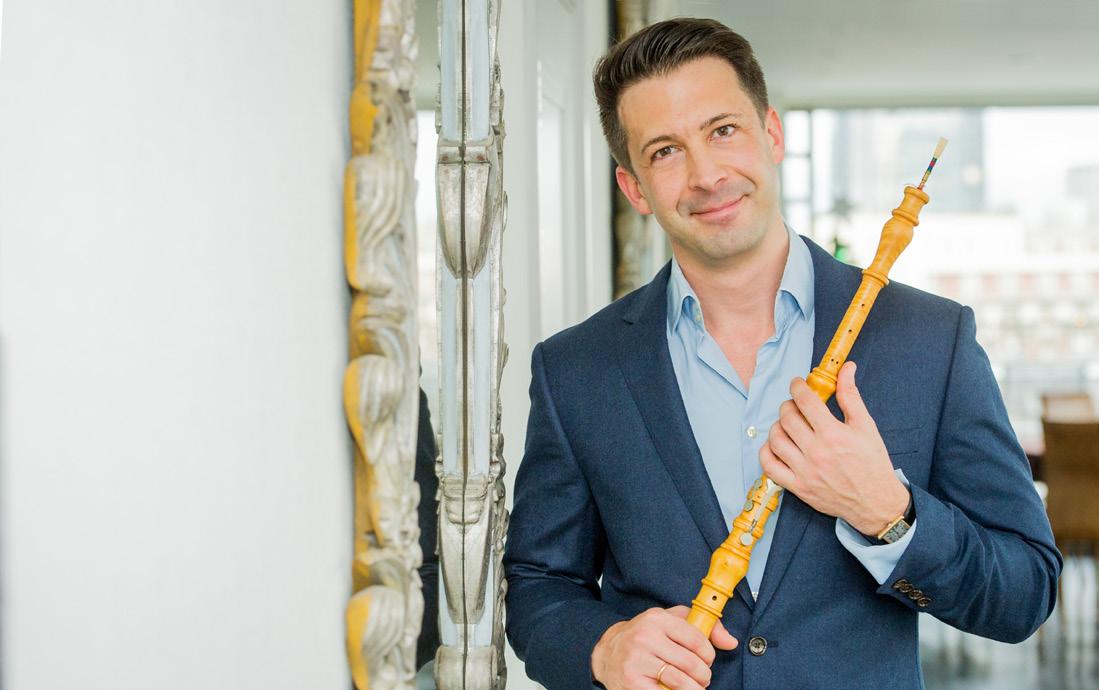
DANIEL BATES Oboe
Born in London, England, Daniel studied at the Royal Academy of Music and at Pembroke College, Cambridge University. When he was eighteen years of age he became the youngest ever winner of the Royal Overseas League Music Competition.
He holds principal oboe positions with the Orchestra of the Age of Enlightenment, the City of London Sinfonia, the Irish Chamber Orchestra and the National Philharmonic Orchestra in Washington DC. Previous principal positions include the Royal Northern Sinfonia. As a session musician he has recorded for numerous artists and films, including several for Disney including the live action version of ‘The Little Mermaid’, the Harry Potter and Star Wars franchises and for Barbra Streisand, Rihanna and Stevie Wonder.
He is a frequent invitee to the International Musicians Seminar at Prussia Cove in the UK, the Lockenhaus Music Festival in Germany and to the Yellow Barn festival in Vermont. He also founded and runs the Fitzrovia Arts Festival.
Internationally, he has given solo recitals in venues such as the Pushkin Museum in Moscow and at various festivals partnered with musicians of international renown including Cecilia Bartoli, Jörg Widmann and Elizabeth Leonskaya.
His solo and chamber music recordings include ‘Heatwave’, ‘One Note Away…’, ‘Pure Bliss’ and ‘Lamenting Lullaby’- all available on Spotify and Apple Music.
A professor at The Catholic University of America, he lives between London and Washington DC with his husband Hunter and their Pomeranian dog Fitz.

LUISE BUCHBERGER Cello
Luise Buchberger was appointed principal cellist of the Orchestra of the Age of Enlightenment in 2013. Born in Frankfurt am Main, she studied modern cello with Clemens Hagen at the Mozarteum Salzburg, with Thomas Grossenbachher at the Hochshule der Künste Zurich, and baroque cello with Kristin von der Goltz at the Hochschule für Musik und Darstellende Kunst in Frankfurt am Main.
Today she is in demand on the modern as well as on the historical instrument as a chamber musician, soloist and continuo cellist.
Since 2009 Luise has been a member of the Chamber Orchestra of Europe, with which she appears in the major concert halls of the world. She is also highly in demand as guest principal cellist, most recently with the Bayerische Rundfunk Sinfonieorchester, Akademie für Alte Musik Berlin, the Scottish Chamber Orchestra, Oslo Philharmonic, Deutsche Kammerphilharmonie Bremen, Camerata Salzburg, Arcangelo and her own Chamber Orchestra of Europe.
© Robert Workman
© Dominic Colchester

Luise is a member of Spunicunifait, an ensemble dedicated to the study and performance of Mozart’s six String Quintets on period instruments. (https://www.spunicunifait.com). The complete quintet cycle was released on Alpha Classics in September 2025.
Luise plays a fine baroque cello made by Giacomo Gavelli in Perugia around 1730, which is owned by the BuchbergerGavelli Syndicate Trust, and an anonymous Milanese cello from c. 1720.

KATI DEBRETZENI Violin / leader
A fourth generation musician, Kati Debretzeni began playing the violin with Sofia Szabó in her native Romania, finishing her studies with Ora Shiran in Israel.
Her passion for historical performance took her to London, where she studied the Baroque violin with Catherine Mackintosh and Walter Reiter.
From 2000 – 2024 Kati led the English Baroque Soloists under John Eliot Gardiner, with whom she has performed the world over. Her playing can be heard in the group’s recordings of JS Bach’s cantatas, the Brandenburg concertos and the more recent recordings of the Mass in B Minor, the St Matthew Passion and Monteverdi’s operas. In 2018 she recorded violin concertos by JS Bach with the orchestra to critical acclaim. Since December 2024 she is leader of Gardiner’s Constellation Ensemble.
Since 2008 she is one of the leaders of the Orchestra of the Age of Enlightenment, and has collaborated with Simon Rattle, Adam and Ivan Fischer, András Schiff, William Christie,
Ottavio Dantone, Vladimir Jurowski, Maxim Emilyanichev and Ricardo Minasi. She has directed the group from the violinist’s chair in works ranging from Baroque repertoire to Beethoven, Mendelssohn and Berlioz, and has recorded Vivaldi’s Four Seasons following performances in collaboration with the Henri Oguike Dance Company.
Kati is in demand internationally as leader, soloist and director with groups such as the Orchestra of the 18th Century (Netherlands), Zefiro (Italy), Akademie für Alte Music Berlin (Germany), Barokkanerne (Norway), Sevilla Baroque Orchestra (Spain), Les Siècles (France), Victoria Baroque (Canada) and the Jerusalem Baroque Orchestra (Israel).
A keen chamber musician, Kati has recorded award-winning CDs with Ricordo and Florilegium. In the last decade and a half she is a member of Trio Goya.
As teacher, Kati has given masterclasses in the UK, Germany, Italy, Norway, Canada, Israel and Hungary. She is on the faculty of the Royal Conservatory of The Hague, and her former students make music the world over.

JANE GOWER Bassoon
After gaining her Bachelor of Music degree from the Canberra School of Music in 1992, Jane undertook six years of postgraduate studies in Early Music at The Royal Conservatory of The Hague. She specialises on historical bassoons, ranging from the dulcian to early 20th century French instruments. Jane is principal bassoonist of Concerto Copenhagen, the Orchestra of the the Age of Enlightenment and the Australian Brandenburg Orchestra, also playing for many years as principal with the
© Erika Hebbert
© Keith Saunders

English Baroque Soloists and l’Orchestre Révolutionnaire et Romantique. She regularly tours with the acclaimed Australian Chamber Orchestra. An active chamber musician, she frequently partners with harpsichordist Lars Ulrik Mortensen. In 1999 she founded the quartet for bassoon and strings island, which has released four CDs. In 2005 she was Musical Director of the Barossa Music Festival, South Australia, and in 2010 launched the chamber music series Barossa Klassik. With a vast collection of original bassoons on which she also performs, Jane is often invited as soloist. She has recorded three bassoon concertos of Franz Danzi with the Kölner Akademie, Mozart’s concerto with Anima Eterna Brugge, and the world premiere of H-J de Croes’ concerto with Terra Nova Collective. Her cadenzas and performance practice notes for this concerto were published by Bärenreiter. Most recently her recording of the infamously difficult bassoon parts of Zelenka’s six trio sonatas with the Prague-based Collegium 1704 was awarded a Diapason d’Or

© Nadja Sjöström
SIR ANDRÁS SCHIFF Fortepiano / director
Sir András Schiff is world-renowned as a pianist, conductor, pedagogue and lecturer. Born in Budapest, Hungary, in 1953, Sir András studied piano at the Liszt Ferenc Academy with Pal Kadosa, György Kurtág, and Ferenc Rados; and in London with George Malcolm.
He has performed cycles of complete Beethoven sonatas and the complete works of JS Bach, Haydn, Schubert and Bartók, which constitute an important part of his work. Having collaborated with the world’s leading orchestras and conductors, he now focuses primarily on solo recital, play-conducting appearances, and exclusive conducting projects. In the 2022 – 2023 season, he was named Artist-In-Residence by the New York Philharmonic, with whom he performed nine concerts. His Bach has become an annual highlight at the BBC Proms, and he regularly performs at the Verbier, Salzburg and Baden-Baden Festivals as well as Wigmore Hall.
Vicenza is home to Cappella Andrea Barca, his own chamber orchestra founded in 1999, comprised of international soloists, chamber musicians and friends. He curates an annual festival in Vicenza at the Teatro Olimpico. Sir András enjoys close relationships with the Chamber Orchestra of Europe, Budapest Festival Orchestra, and Orchestra of the Age of Enlightenment.
In 2018 he accepted the role of Associated Artist with the OAE, complementing his interest in performing on period keyboard instruments.
With a prolific discography, he established an exclusive relationship in 1997 with producer Manfred Eicher and ECM New Series. Highlights have included the complete Beethoven Piano Sonatas recorded live from Zurich; solo recitals of Schubert, Schumann and Janáček; and JS Bach’s Partitas, Goldberg Variations, and Well-Tempered Clavier. His most recent release features Brahms and Schumann Violin Sonatas with Yuuko Shiokawa, released in late 2024.
Sir András Schiff’s many honors include the International Mozarteum Foundation’s Golden Medal (2012), Germany’s Great Cross of Merit with Star (2012), the Royal Philharmonic Society’s Gold Medal (2013), a Knighthood for Services to Music (2014) and a Doctorate from the Royal College of Music (2018). He was awarded the Jean Gimbel Lane Prize in Piano Performance in 2021 from The Henry and Leigh Bienen School of Music at Northwestern University. In 2024, he received the Austrian Cross of Honour for Science and Art as well as the Bösendorfer Ring.
Chief Executive
Crispin Woodhead
Chief Operating Officer
Edward Shaw
BUSINESS DEVELOPMENT
Business Development
Director
Jo Perry
DEVELOPMENT
Development Officer
Emma Badman
Head of Grants (maternity leave)
Madison Hallworth
Head of Grants (maternity cover)
Samantha Haycock
Development Director
Harry Hickmore
Development Officer
Eric Ohlund
Head of Individual Giving
Hattie Rayfield-Williams
Ticketing & Data Manager
Paola Rossi
DIGITAL
Head of Digital Content
Zen Grisdale
EDUCATION
Education Director
Cherry Forbes
Education Officer
Sofia Swenson-Wright

FINANCE
Finance Director
Mary Price
Finance Manager
Chloe Tsang
MARKETING
Marketing Director
Doug Buist
Marketing Officer
Dora Tsang
PROJECTS
Projects Director
Sophie Adams
Projects Manager
Ed Ault
Orchestra Consultant
Philippa Brownsword
Choir Manager
David Clegg
Librarian
Roy Mowatt
OAE-Acland Burghley
School Link
Anna Rimington
LEADERS
Huw Daniel
Kati Debretzeni
Margaret Faultless
Matthew Truscott
PLAYERS’ ARTISTIC COMMITTEE
Cecelia Bruggemeyer (Chair)
Alexandra Bellamy
Daniel Edgar
Katherine Spencer
Christine Sticher
PRINCIPAL ARTISTS
John Butt
Sir Mark Elder
Adam Fischer
Iván Fischer
Vladimir Jurowski
Sir Simon Rattle
Sir András Schiff
EMERITUS CONDUCTORS
William Christie
Sir Roger Norrington
LIFE PRESIDENT
Sir Martin Smith
BOARD OF DIRECTORS
Imogen Charlton-Edwards (Chair)
Daniel Alexander
Alexandra Bellamy
Cecelia Bruggemeyer
Daniel Edgar
Adrian Frost
Alison McFadyen
Roger Mountford
Katherine Spencer
Christine Sticher
Dr. Susan Tranter
Emma-Jane Azkoul
Elly Williamson
Crispin Woodhead
OAE TRUST
Adrian Frost (Chair)
Mark Allen
Imogen Charlton-Edwards
Hannah Yan Field
Dino Fontes
Paul Forman
Jessica Kemp
Maarten Slendebroek
Jessica Smith
Sir Martin Smith
Caroline Steane
Season identity by Hannah Yates
Welcome to the Southbank Centre
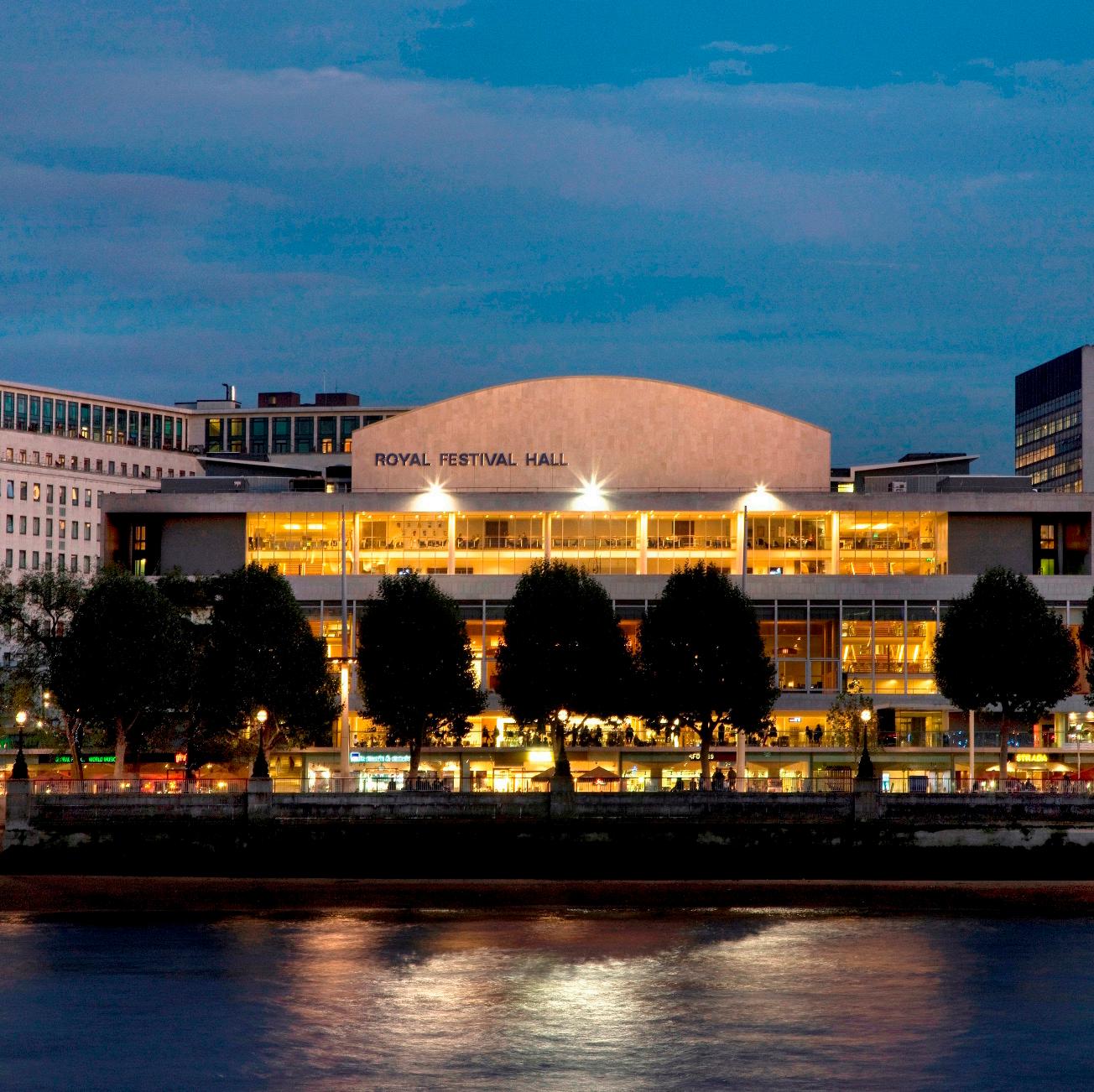
We’re the UK’s largest centre for the arts and one of the nation’s top five visitor attractions, showcasing the world’s most exciting artists at our venues in the heart of London. As a charity, we bring millions of people together by opening up the unique art spaces that we care for.
The Southbank Centre is made up of the Royal Festival Hall, Queen Elizabeth Hall, Purcell Room, Hayward Gallery, National Poetry Library and Arts Council Collection. We’re one of London’s favourite meeting spots, with lots of free events and places to relax, eat and shop next to the Thames.
We hope you enjoy your visit. If you need any information or help, please ask a member of staff. You can also write to us at Southbank Centre, Belvedere Road, London SE1 8XX, or email hello@southbankcentre.co.uk
Subscribers to our email updates are the first to hear about new events, offers and competitions. Just head to our website to sign up.
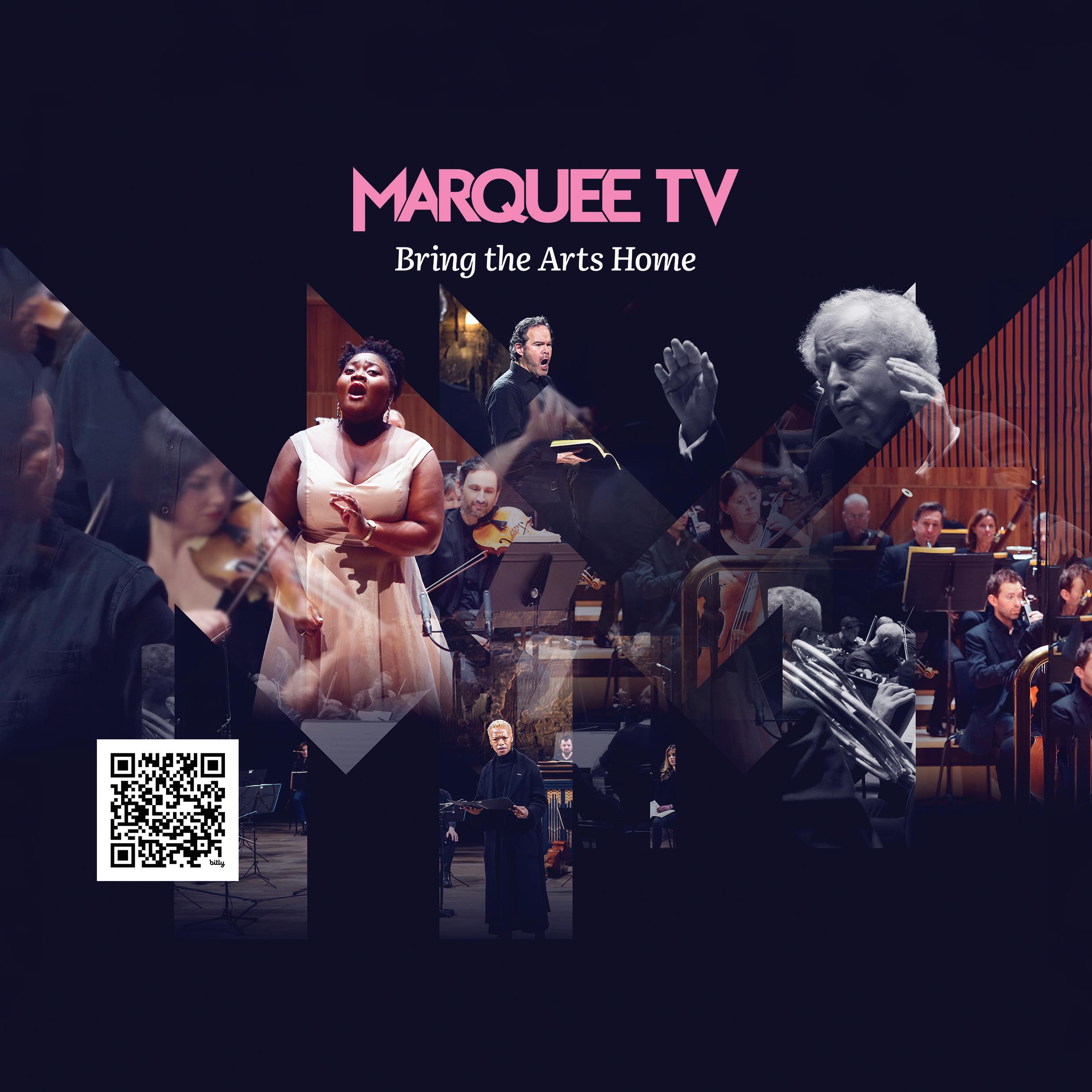

THANK YOU
This looks like a long list, doesn’t it? But these generous people and organisations provide OAE with around half of our income every year. Contact us on development@oae.co.uk if you would like to join us as a supporter.
Principal Patrons
Imogen Charlton-Edwards*
Denys and Vicki Firth*
Adrian Frost*
Sir Martin and Lady Smith OBE*
Dr Tony Trapp MBE
Season Patrons
Mark and Susan Allen*
Julian and Annette Armstrong*
Bruce Harris*
Nigel Jones and Françoise Valat-Jones*
Selina and David Marks*
Philip and Rosalyn Wilkinson*
Mark and Rosamund Williams*
Project Patrons
Victoria and Edward Bonham Carter
Ian S Ferguson CBE and Dr Susan Tranter
Aria Patrons
Joanna and Graham Barker
Steven Larcombe
Peter and Veronica Lofthouse
Stanley Lowy
Alison McFadyen
Peter Rosenthal
Maarten and Taina Slendebroek
Caroline Steane
Lord and Lady Stirrup
Eric Tomsett
Mr J Westwood
* denotes members of The Forty Circle. The Forty Circle provide exceptional philanthropic support to the 2025 / 26 and 2026 / 27 seasons.
Chair Patrons
Daniel Alexander KC
Principal Cello
Katharine Campbell Violin
Anthony and Celia Edwards
Principal Oboe
Claire Espiner
Cello
Anna Flynn in memory of James Flynn
Co-Principal Lute / Theorbo
Paul Forman
Co-Principal Cello / Violin /
Co-Principal Horn
Jane Gilbert Principal Flute
Andrew Green KC and Jennifer Hirschl
Principal Clarinet
Melanie J. Johnson
Christina M
Principal Flute
Michael and Harriet Maunsell
Principal Keyboard
Jenny and Tim Morrison
Second Violin
Andrew Nurnberg
Co-Principal Oboe
Stephen and Penny Pickles
Viola
Professor Richard Portes CBE FBA
Co-Principal Bassoon
John and Rosemary Shannon
Principal Horn
Colin Singer
Education Patrons
Sir Timothy and Lady Lloyd
Susan Palmer OBE
Andrew and Cindy Peck
Professor Richard Portes CBE FBA
Sue Sheridan OBE
Crispin Woodhead and Christine Rice
Associate Patrons
Damaris Albarrán
Noël and Caroline Annesley
Sir Richard Arnold and Mary Elford
William Barham
Lady Sarah Bowness
David and Marilyn Clark
David Emmerson
Dino Fontes and David Stinson
Lorna Gradden
Roger Heath MBE and Alison Heath MBE
Peter and Sally Hilliar
Philip Hughes
Breandán Knowlton
Kathryn Langridge
Moira and Robert Latham
Sir Timothy and Lady Lloyd
Roger Mears and Joanie Speers
David Mildon in memory of Lesley Mildon
Gary and Nina Moss
John Nickson and Simon Rew
Andrew and Cindy Peck
Tim and Kate Price
David Price and Daniel Gerring
Tim Rhys-Morgan
Jan Schlapp - Rehearsal Soup Patron
Michael Spagat and Karen Lauxmann
Roger and Pam Stubbs
Emily Stubbs and Stephen McCrum
Simon and Karen Taube
Elly Williamson
OAE NextGen
Andrew Barratt
Marina Abel Smith
Marianne and William Cartwright-Hignett
Mr Harry Hickmore
Jessica Kemp and Alex Kemp
Gold Friends
Michael Brecknell
Tony Burt
Gerard Cleary
Sarah Lady Gough
Chris Gould
Roger Lewis
Alison and Ian Lowdon
Mr Michael Mackenzie
Roger & Jane Mountford
Mr and Mrs Smith
Silver Friends
Haylee and Michael Bowsher
George and Kay Brock
David Cox
Stephen and Cristina Goldring
Nicola Haskins
Malcolm Herring
Patricia Herrmann
Rupert and Alice King
Rose and Dudley Leigh
Anthony and Carol Rentoul
Rupert Sebag-Montefiore
Susannah Simons
Bronze Friends
Tony Baines
Ursula Brennan
Penny & Robin Broadhurst
Dan Burt
Cynthia Butterworth
Michael A Conlon
Mrs SM Edge
Ms Hannah Field
Mrs Mary Fysh
Martin and Helen Haddon
Penelope Hamilton and Andrew Parker
The Lady Heseltine
Mrs Auriel Hill
Sir Roger Jackling
Bill Marshall
Richard I Morris Jr
Mr Matthew Pollitt
Mike Raggett
Alan Sainer
Simon Smith
Ms Sian Stickings
Mr James Stratford
Steve and Jackie Street
Mr and Mrs Tony Timms
Mr John Truscott
Mr & Mrs Michael Vernell
Mrs Joy Whitby
Trusts & Foundations
Arts Council England
The Britford Bridge Trust
John Lyon’s Charity
The Linbury Trust
Paul Hamlyn Foundation
Cockayne – Grants for the Arts
Dreamchasing
The Foyle Foundation
Garfield Weston Foundation
Henocq Law Trust – The Ann and Peter Law OAE Experience Scheme
John Armitage Charitable Trust
The Neville Abraham Foundation
The Roger and Ingrid Pilkington
Charitable Trust
The Sir Victor Blank Charitable Settlement
Skyrme Hart Charitable Trust
The Vernon Ellis Foundation
The 29th May 1961 Charitable Trust
The Albert and Eugenie Frost Music Trust
The Apax Foundation
The Aspinwall Educational Trust
The Charles Peel Charitable Trust
The de Laszlo Foundation
The D’Oyly Carte Charitable Trust
The Garrick Charitable Trust
The Golsoncott Foundation
The Harold Hyam Wingate Foundation
The Idlewild Trust
The John Thaw Foundation
Mark Allen Foundation
The Michael Marks Charitable Trust
The Patricia Routledge Foundation
The Patrick Rowland Foundation
The Peter Cundill Foundation
Scops Arts Trust
The Stanley Picker Trust
The Thistle Trust
Thriplow Charitable Trust
Vaughan Williams Foundation
Corporate Supporters
Ambriel
Kirker Holidays
Mark Allen Group
Honorary Council
Sir Martin Smith (Chair)
Sir Victor Blank
Edward Bonham Carter
Cecelia Bruggemeyer
Denys Firth
Nigel Jones
Max Mandel
David Marks
Julian Mash
Greg Melgaard
Roger Montgomery
Susan Palmer OBE
David Pickard OBE
Jan Schlapp
Diane Segalen
Lady Elise Smith OBE
Emily Stubbs
Rosalyn Wilkinson
Mark Williams
Thank you to OAE Friends, Supporting Friends and supporters who wish to remain anonymous.



Why we need to put creativity back at the heart of education...
There is overwhelming public support for arts in schools. We know – we’ve been doing the research over the summer. Over 80% of UK adults believe all children should have routine access to highquality creative activities in school. 64% agree cutting arts in schools harms children’s confidence and communication, whilst nearly 70% of Gen Z and Millennials (people born after 1982) say that access to arts in school built their confidence and resilience.
Despite a modest increase in students studying the performing arts, the long-term trend remains in decline; since 2010, the proportion of GCSE entries in arts subjects (such as music, dance and drama) has almost halved.
In our view, one of the best solutions is to facilitate more initiatives that follow the blueprint of our radical residency at Acland Burghley School with the support of the UK Government, councils, charities and foundations.
Crispin Woodhead, our CEO, notes that:
“It’s encouraging to see more young people taking up music and performing arts in GCSEs this year – especially as we know creativity is one of the top skills employers are looking for. But we can’t afford to see this as job done.
“This moderate improvement, together with our new research, shows that the public clearly values the arts just as much as core academic subjects. Working with and at Acland Burghley, we see every day how embedding the arts improves confidence, resilience and opportunity for young people – and those benefits ripple out into the whole community.
“Our story is not just about one school or one orchestra: it’s about how cultural groups can rethink their role in society and bring the arts to the wider community.”

The Magic Flute and the Bird That Would Be Free, Southbank Centre, June 2025 © Zen Grisdale
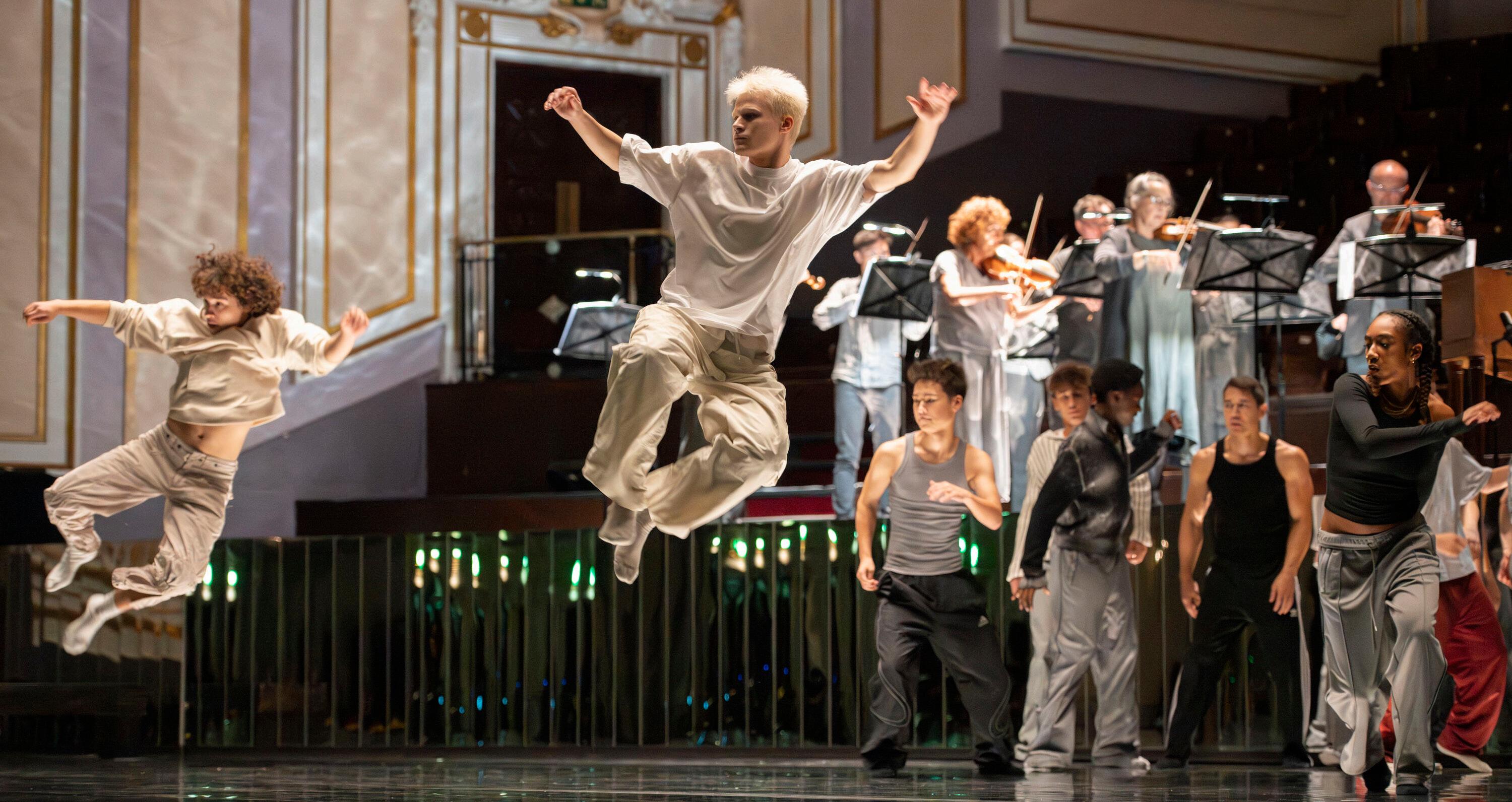
...(and how to do it)
Our recent collaboration, Breaking Bach, which premiered to a sold-out audience at the Edinburgh International Festival in August, is compelling proof of this model in action. Breaking Bach was not an extracurricular showcase but a professional commission that gave a group of students from Acland Burghley the opportunity to create alongside OAE musicians, professional dancers, and a leading international artist in choreographer Kim Brandstrup. It shows how, given the chance, our young people really are five star performers!
Other projects such as the recent The Magic Flute and the Bird That Would Be Free (our Southbank Centre season finale in June), our ‘touring’
community opera The Fairy Queen: Three Wishes, Dreamchasing Young Producers and Musical Connections programmes, all give students at Acland Burghley and schools around England the chance to create, perform and deliver as part of their day-to-day education.
Embedding the arts in everyday school life does more than inspire – it connects communities and creates real-world opportunities. Crucially, it raises aspirations at all levels of experience.
Our research makes clear that the public wants change. We are calling for reform and for a bold rethink of how culture and society can work together.
Breaking Bach, Edinburgh International Festival, August 2025 © Tommy Ga-Ken Wan




















































































































































































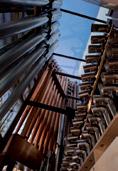









FANTASTIC SYMPHONIES at the Southbank Centre
1 February
MOZART’S WORLD: A LITTLE NIGHT MUSIC with Katherine Spencer (clarinet)
8 February
IT SHALL CERTAINLY NOT BEND AND CRUSH ME COMPLETELY
Beethoven Symphonies Nos. 4 & 5 with Adam Fischer (conductor)
OAE TOTS
at the Southbank Centre for 2 to 5 year olds and their grown-ups
18 January
MOZART CHASED A CAT
31 March
SAILING AWAY
THE NIGHT SHIFT
Chamber music down a local pub
Next gigs:
1 December at The Old Queen’s Head in Islington
10 February at The Blues Kitchen in Brixton
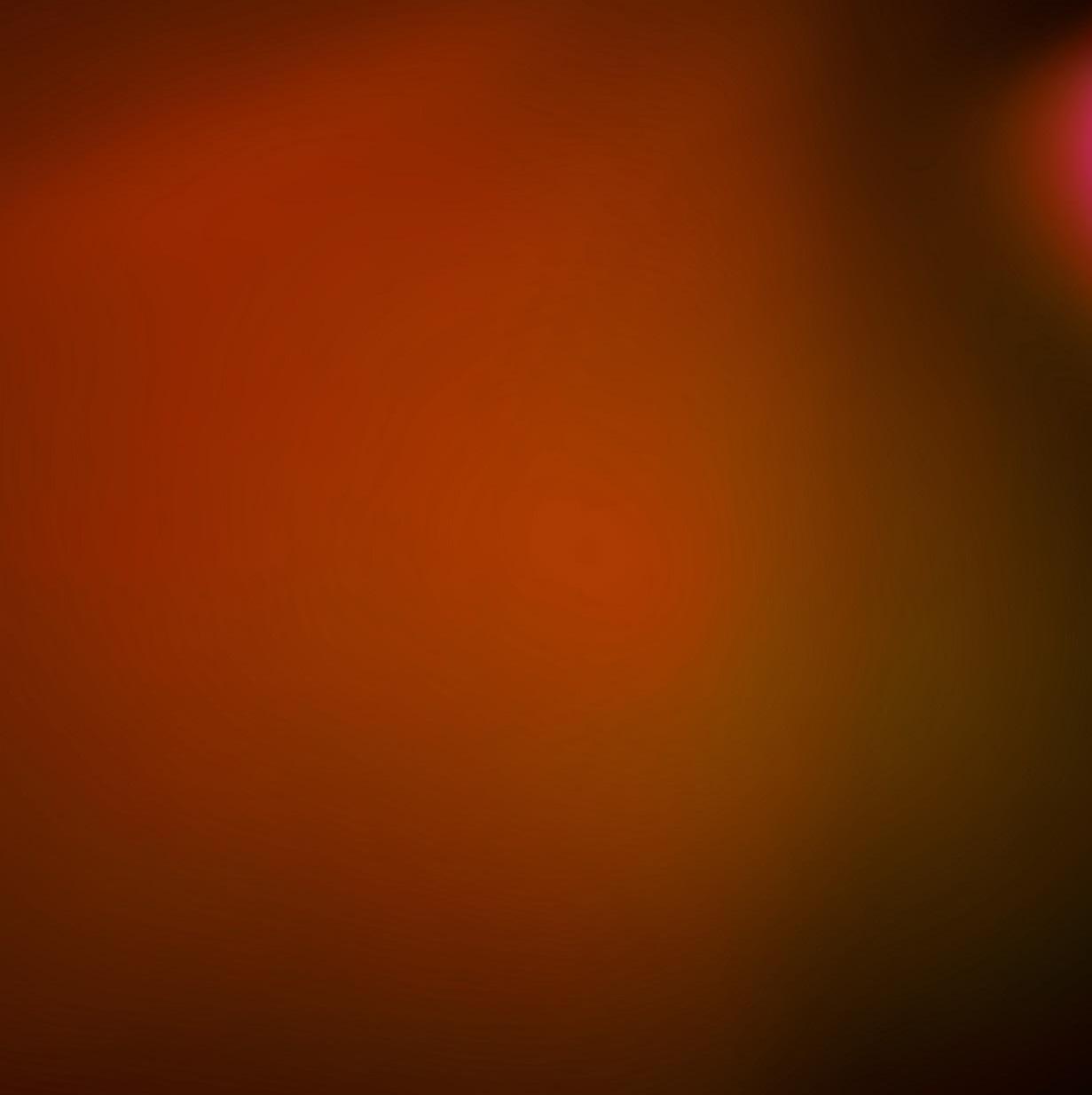

BACH, THE UNIVERSE AND EVERYTHING at Kings Place
Mission: to explore our place in the cosmos guided by the intergalactic genius of JS Bach. Each monthly event features one of Bach’s cantatas, and other choral and instrumental works, alongside a talk by an eminent astronomer.
Next event: 30 November at 11.30am








